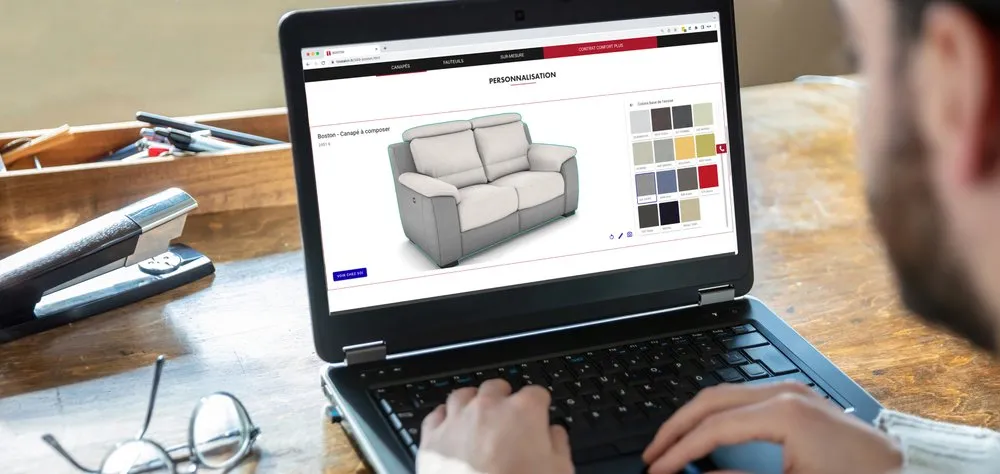How 3D planning solutions can optimize reverse logistics for home retailers
Introduction
Making home improvements is a deeply personal experience, and the criteria is high for retailers to overcome before consumers are willing to purchase.
Large online retailers such as Amazon and ASOS have changed the game when it comes to consumer attitudes to returns and exchanges, placing pressure on home retailers across the globe to provide consumers with all the information required to return unwanted goods as quickly as possible. Generous returns policies now form an important part of any brand’s marketing messaging. This tactic is frequently used for home products such as mattresses.
‘Try before you buy’ certainly means the risk for consumers is minimal, but what is the cost of this ‘free trial’ mindset to the retailer? According to the latest market research, it’s high; the global logistics market is expected to reach $603.90 billion by 2025, growing at a CAGR of 4.6% from 2017 to 2025.
Ultimately, making home improvements is a deeply personal experience, and the criteria is high for retailers to overcome before consumers are willing to commit to a purchase. This presents the need for a solution that supports an optimized reverse logistics process; that bridges convenience with accurate visualization and product information, to deliver the best results to consumers and retailers alike.
The reverse logistics process
How the rise of the e-tailer changed the supply chain
Prior to the surge of online e-commerce, bricks and mortar retailers had access to very limited information outside of the bottom-line store sales and net profits. This is no longer the case, with retailers now using insights from big data analytics to help streamline their operations.
The same goes for returned goods. By receiving insight as to the reasons why products have been returned, retailers can alter their strategies and not be left to deal with the choice of either reselling or accepting a loss. Returns of custom-made furniture or fixtures are extremely expensive for retailers, as a product designed for one customer is often very difficult to resell.
Enhanced analytics are now available that mean retailers are able to report on site traffic, show exactly what items have been viewed, and provide insight into who has viewed them – and the actions they took after that click. This information gives retailers better insight into the buyer themselves and the buyer journey – data that can be applied to making more informed buying decisions on product lines for catalogs, or for creating personalized marketing campaigns. Products and communications are more likely to be in line with customer demand as a result, and, importantly, the retailer has the knowledge needed to help shift excess stock in the easiest way.
For returns, however, there is still a challenge that needs to be explored by retailers, especially those with an online e-commerce website. Ultimately, it is a case of prevention as the best cure; making sure that customers have realistic expectations of goods purchased and validation that any furniture, for example, will fit the space allocated. A consumer’s worst nightmare is ordering a sofa that doesn’t fit through the door, but the same goes for retailers too.
Getting it right first time with the power of 3D
Online browsing is a key part of the research stage of purchase for most modern consumers, with some not even stepping foot into a store before hitting ‘buy’. However, home retail is a shopping experience built around aesthetics, with elements such as textures or materials having a large impact on decisions. This means that purely online purchases leave room for misjudged decisions or items arriving ‘not as expected’, costing both parties time and effort. The further along in the buying journey that errors are uncovered, the higher the cost to correct and effort involved to fix.
This is where 3D planning can offer great value, with the technology to visualize accurate representations of what consumers will receive for their money – and, importantly, minimizing design errors that will cost money for either party to correct. Using the HomeByMe solution, consumers can benefit from a host of intuitive features to address this, such as automated business rules that will highlight potential design errors.
The solution uses the exact measurements for room dimensions that are input by the user, factoring in elements such as plug sockets or radiators to provide tailored design recommendations and guidance towards a successful outcome. These early warnings of layout conflicts work to prevent the user entering further along the sales cycle with anything other than achievable, accurate and inspiring designs.
Additionally, the HomeByMe for Home Retailers 3D planning solution offers key insights into user preferences to help inform buying teams and processes. The ability to view the number of users that have incorporated specific items into their designs gives a great indication of the level of interest and likelihood of purchase. Catalog production and buying can also be optimized accordingly.
Optimized for success
Ultimately there is no golden ‘solve all’ solution that eradicates returns and human indecision, but there are certainly steps that can be taken to predict and prevent a substantial percentage. With the total number of returns set to soar even higher, the advantages for a business that can keep returns low are huge. Using 3D planning, retailers are equipped with everything they need to qualify customer purchases as comprehensively as possible, reducing errors and delivering to consumers the products they want and need.
